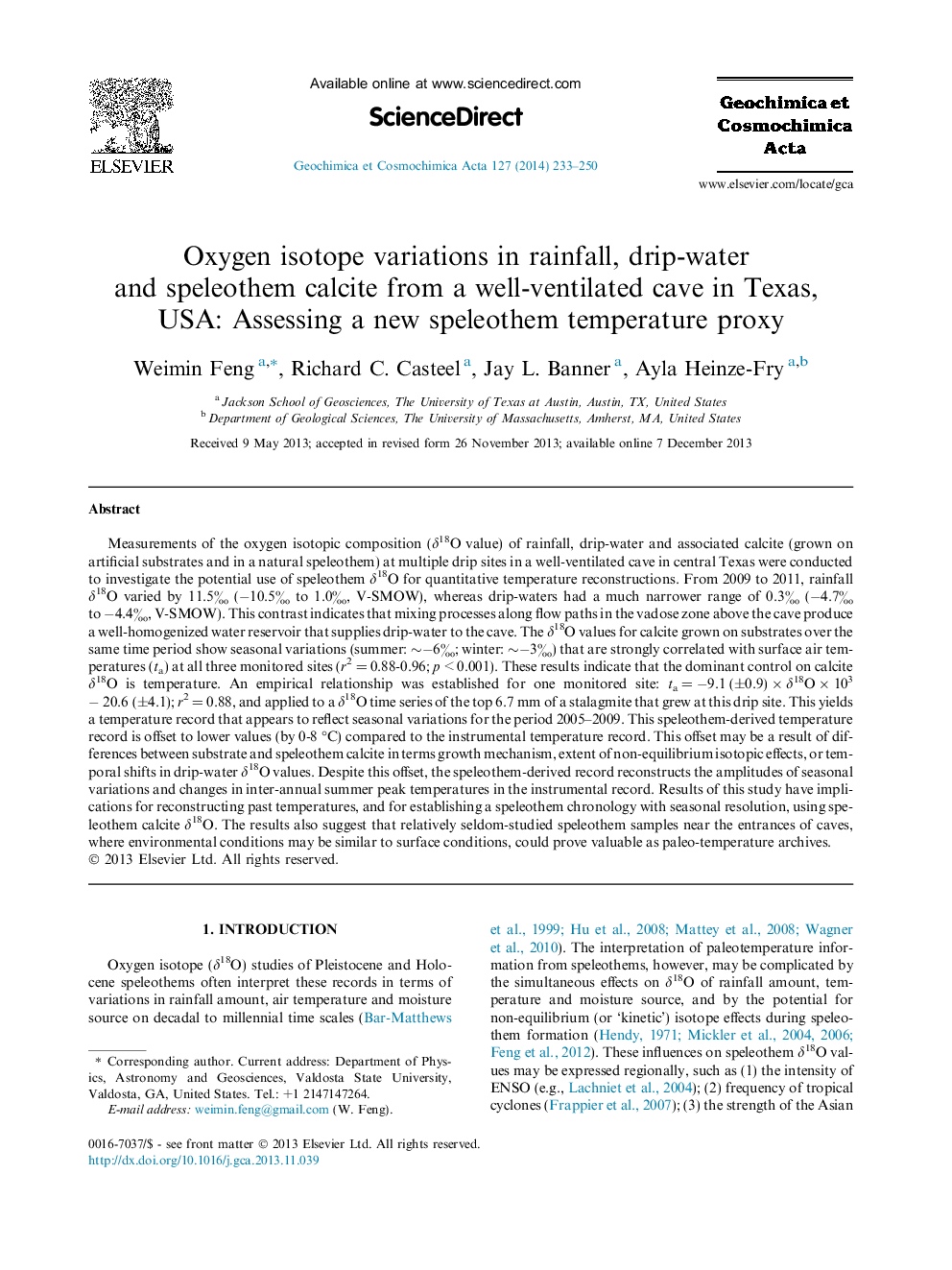| Article ID | Journal | Published Year | Pages | File Type |
|---|---|---|---|---|
| 4702146 | Geochimica et Cosmochimica Acta | 2014 | 18 Pages |
Measurements of the oxygen isotopic composition (δ18O value) of rainfall, drip-water and associated calcite (grown on artificial substrates and in a natural speleothem) at multiple drip sites in a well-ventilated cave in central Texas were conducted to investigate the potential use of speleothem δ18O for quantitative temperature reconstructions. From 2009 to 2011, rainfall δ18O varied by 11.5‰ (−10.5‰ to 1.0‰, V-SMOW), whereas drip-waters had a much narrower range of 0.3‰ (−4.7‰ to −4.4‰, V-SMOW). This contrast indicates that mixing processes along flow paths in the vadose zone above the cave produce a well-homogenized water reservoir that supplies drip-water to the cave. The δ18O values for calcite grown on substrates over the same time period show seasonal variations (summer: ∼−6‰; winter: ∼−3‰) that are strongly correlated with surface air temperatures (ta) at all three monitored sites (r2 = 0.88-0.96; p < 0.001). These results indicate that the dominant control on calcite δ18O is temperature. An empirical relationship was established for one monitored site: ta = −9.1 (±0.9) × δ18O × 103 − 20.6 (±4.1); r2 = 0.88, and applied to a δ18O time series of the top 6.7 mm of a stalagmite that grew at this drip site. This yields a temperature record that appears to reflect seasonal variations for the period 2005–2009. This speleothem-derived temperature record is offset to lower values (by 0-8 °C) compared to the instrumental temperature record. This offset may be a result of differences between substrate and speleothem calcite in terms growth mechanism, extent of non-equilibrium isotopic effects, or temporal shifts in drip-water δ18O values. Despite this offset, the speleothem-derived record reconstructs the amplitudes of seasonal variations and changes in inter-annual summer peak temperatures in the instrumental record. Results of this study have implications for reconstructing past temperatures, and for establishing a speleothem chronology with seasonal resolution, using speleothem calcite δ18O. The results also suggest that relatively seldom-studied speleothem samples near the entrances of caves, where environmental conditions may be similar to surface conditions, could prove valuable as paleo-temperature archives.
